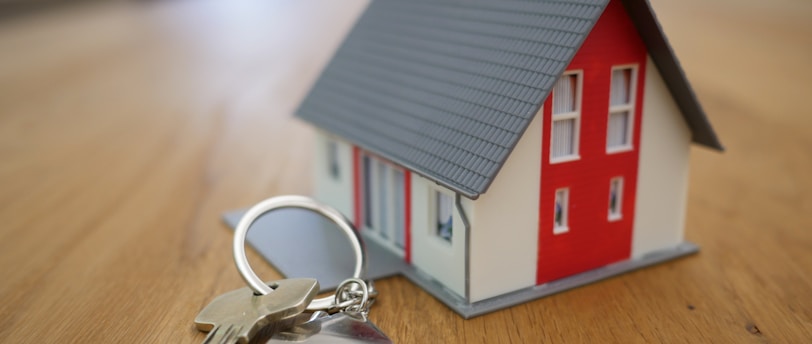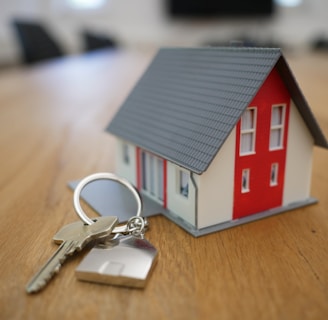Buying a new home? what to look for in an HVAC system
Sylas Cuthill
4/8/20253 min read


Buying a new home is an exciting milestone, but it's also a time to pay close attention to the details—especially when it comes to the HVAC system. Heating, ventilation, and air conditioning play a huge role in your home's comfort, energy efficiency, and long-term maintenance costs. Yet, many buyers overlook this critical component during the home-buying process. In this article, we’ll break down what to look for in an HVAC system so you can make an informed decision and avoid costly surprises down the road.
The first thing you're going to want to know about the HVAC system is what kind of fuel is it using. A vast majority of homes in North America use Natural Gas for the heating and electricity for the air conditioning but not all. there are a small subset of houses, usually townhomes, that use some unique heating systems. The heating systems you want to stay away from is Electric Baseboard. This is by far the most expensive style of heating as it uses electric resistance to heat the home and on a per kilowatt basis electricity is roughly 3x more expensive than Natural gas as a cubic foot of natural gas has 1000btus of heating capacity and each watt is 3.41 Btu/h so for each kilowatt of gas you are paying roughly $3.40. That cost difference adds up fast, especially in colder climates where your furnace is working overtime for months on end. So, if you’re touring a home and spot those long baseboard heaters along the walls, it's worth asking the seller (or your inspector) about potential heating upgrades or negotiating the price accordingly.
Now, let's talk about the most common and generally most efficient heating system you'll find: the forced air gas furnace. These systems heat air in a combustion chamber and then use a blower fan to circulate it through a series of ducts that lead to vents in each room. When well-maintained, they’re fast, effective, and relatively inexpensive to run. What’s more, they often share ductwork with the home’s central air conditioning system, which helps streamline maintenance and installation costs.
When checking out a home's forced air system, look for a few key things:
Age of the furnace: Most gas furnaces have a lifespan of about 15-20 years. If the unit is older, factor in the potential cost of a replacement.
AFUE rating: This stands for Annual Fuel Utilization Efficiency. A newer, high-efficiency furnace will have an AFUE rating of 90% or higher (but its usually 96%), meaning 96% of the fuel becomes usable heat. a good way to tell the efficiency is the type of vent (not the duct work, the vent that removes the products of combustion from the furnace) on top of the furnace. On a high efficiency furnace, you will see both a drain for the condensate water that is a product of the hydrogen burning in the natural gas (lower efficiency furnaces don't produce water as a byproduct) and white PVC pipe coming off the top. if the furnace doesn't have a drain tube or PVC vent pipe then it's probably a mid-efficiency and is only about 70-80% efficient and will need upgraded soon. All low efficiency style furnaces at 15+ years old now in Canada as the government no longer allows them to be installed since ~2007
When it comes to air conditioning, most buyers will encounter one of two systems: traditional central air or ductless mini-splits. Both have their pros and cons. Central air conditioning uses the same ducts as your forced air furnace, making it a convenient and often cost-effective solution in homes that already have ductwork in place. It cools the entire home uniformly and is controlled by a single thermostat. However, it can be less efficient in larger homes or homes with varying temperature needs in different rooms. Ductless systems, on the other hand, involve wall-mounted units (often called mini-splits) that cool individual rooms or zones. These are a game-changer in homes without ducts, like older houses or additions. They're extremely efficient, whisper-quiet, and let you control the temperature room-by-room. The downside? They’re typically more expensive to install upfront if you need multiple zones and can be a bit visually intrusive for some homeowners.
The Bottom Line
Whether you’re eyeing a charming century home or a newly built suburban dream, don’t overlook the HVAC system. Ask questions, get maintenance records, and bring in a professional for a second opinion if needed. A great heating and cooling system isn’t just about comfort—it’s a major factor in your long-term living costs and overall satisfaction in your new home. Keep your eyes out for inefficient systems that might have huge cost lurking in the near future and give HVAC ASAP a call for all your HVAC needs once you settle on the perfect home for you!
